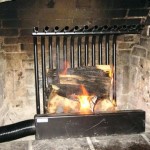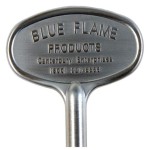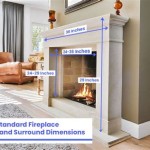Covering A Brick Fireplace With Wood: A Comprehensive Guide
Brick fireplaces, while often adding character and warmth to a room, can sometimes clash with evolving interior design preferences. Covering a brick fireplace with wood is a popular option for updating its appearance, allowing customization to match a specific aesthetic. This process involves careful planning, selection of appropriate materials, and precise execution to ensure a safe and visually appealing result. There are numerous design options available, ranging from rustic reclaimed wood to sleek modern paneling, each offering a unique look and feel.
Before embarking on this project, a thorough assessment of the existing fireplace is crucial. This includes inspecting the brick for any structural damage, such as cracks or loose bricks. Addressing these issues is paramount before adding any covering. Additionally, it is necessary to understand local building codes and regulations pertaining to fireplace modifications. These codes often dictate clearances around the firebox and the types of materials that can be used. Ignoring these regulations can lead to safety hazards and potential code violations.
Assessing the Existing Brick Fireplace
The initial step involves a detailed inspection of the brickwork. Look for signs of spalling, where the brick surface is flaking or crumbling. This can be caused by moisture penetration and freeze-thaw cycles. Any loose bricks should be re-mortared to ensure a stable and structurally sound base. Cracks in the mortar joints should also be repaired to prevent further damage and ensure proper sealing. Failure to address these issues can compromise the integrity of the wood covering and potentially create a fire hazard. Furthermore, the existing firebox needs to be evaluated. If the fireplace is still intended for use, consider the impact of the wood covering on the firebox opening and ensure adequate clearance for safe operation. If the fireplace is no longer in use, the firebox can be blocked off or incorporated into the new design.
Cleaning the brick is also a critical step. Remove any soot, dust, or debris that may have accumulated over time. A wire brush and a mild detergent solution can be used to scrub the brick surface. Rinse thoroughly with clean water and allow the brick to dry completely before proceeding with the covering. A clean surface will ensure proper adhesion of any adhesives or fasteners used to secure the wood. Depending on the existing finish on the brick, it may be necessary to lightly sand the surface to create a better bonding surface for adhesives. This is particularly important if the brick has been painted or sealed.
Selecting the Appropriate Wood and Materials
The choice of wood is a crucial factor in the overall aesthetic and longevity of the covered fireplace. Solid wood, such as oak, maple, or pine, offers a classic and durable option. These woods can be stained or painted to match any desired color scheme. Engineered wood products, such as plywood or MDF, are also viable alternatives, offering cost savings and dimensional stability. When using engineered wood, ensure that it is properly sealed to prevent moisture damage. Reclaimed wood is another popular choice, adding a rustic and unique character to the fireplace. However, reclaimed wood may require more preparation to ensure a smooth and even surface.
In addition to the wood itself, other materials will be necessary. These include construction adhesive, screws or nails, shims, and trim pieces. Construction adhesive is used to bond the wood directly to the brick. Screws or nails are used to provide additional support and secure the wood in place. Shims are used to level and align the wood panels, ensuring a flush and even surface. Trim pieces are used to conceal any gaps or seams and provide a finished look. Fire-resistant materials, such as cement board or mineral wool insulation, should be used as a barrier between the brick and the wood, especially if the fireplace is still in use. This will help to prevent the wood from overheating and potentially igniting.
Installation Techniques and Safety Considerations
Before beginning the installation, create a detailed plan or template. This will help to ensure accurate measurements and prevent costly mistakes. Use a level to ensure that all panels are installed straight and plumb. Begin by attaching a framework of furring strips to the brick. These strips provide a level surface for attaching the wood panels and create an air gap between the brick and the wood. Use construction adhesive and masonry screws to secure the furring strips to the brick. Ensure that the screws are long enough to penetrate the brick sufficiently to provide a strong hold.
Cut the wood panels to the desired size and shape using a saw. Sand the edges of the panels to create a smooth and even surface. Apply construction adhesive to the back of the panels and attach them to the furring strips. Use screws or nails to provide additional support. Shim the panels as needed to ensure a flush and even surface. Once the panels are installed, install the trim pieces to conceal any gaps or seams. Use caulk to seal any remaining gaps and prevent moisture penetration. Finish the wood with a stain, paint, or sealant of your choice. Ensure that the finish is compatible with the type of wood used and provides adequate protection against moisture and wear.
Safety is paramount throughout the installation process. Wear appropriate safety gear, including eye protection, gloves, and a dust mask. Use power tools safely and follow all manufacturer's instructions. Ensure that the work area is well-ventilated. Be mindful of electrical wiring and plumbing when attaching the furring strips to the brick. If the fireplace is still in use, ensure that there is adequate clearance between the wood covering and the firebox opening. Consult with a qualified professional if you have any concerns about the safety of the installation.

How To Cover A Brick Fireplace With Wood Stone Nina Hendrick Home Remodel Diy

Diy Fireplace Makeover Wood Slat
:max_bytes(150000):strip_icc()/MadetobeaMommaBefore-5bb2476446e0fb002607ad4f.jpg?strip=all)
Before And After Fireplace Makeovers

How To Cover A Brick Fireplace With Wood Stone Nina Hendrick Home

How To Plaster A Brick Fireplace So Much Better With Age

How To Build A Fireplace Surround Beneath My Heart

16 Red Brick Fireplace Makeover Ideas

Diy Fireplace Makeover Wood Slat

Our Ugly Brick Fireplace He Vetoes Painting It Laurel Home
:max_bytes(150000):strip_icc()/MaisondePaxAfter-5bb2507646e0fb0026d9558d.jpg?strip=all)
Before And After Fireplace Makeovers








